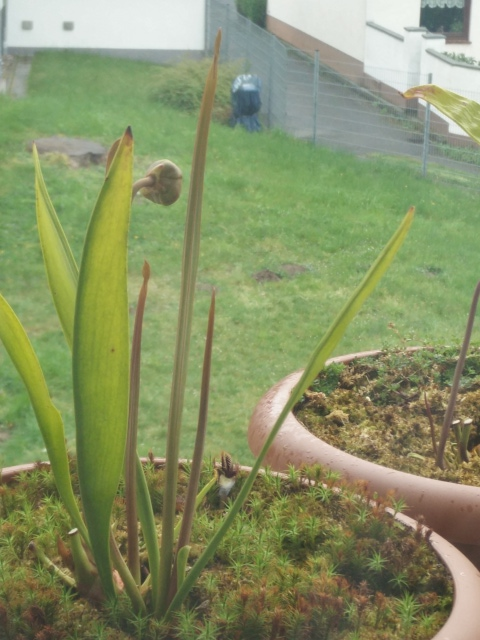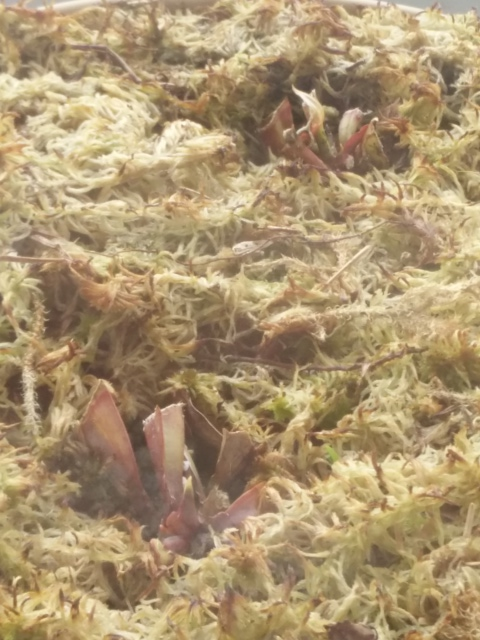Question
 Sarracenia flava
Sarracenia flava  Sarracenia purpurea
Sarracenia purpurea
Hi Jeff,
I have noticed that Sarracenia psittacina, purpurea and minor are those who send their flowers and new pitchers out at the latest time in the new growing season. Could it be? Is it because oreophila, flava and others have rhizomes and/or philodia? Or is it just nature磗 natural choice? Flava flowers are growing high, with some pitchers following while psittacina and purpurea only have started to emerge...
And last but not least, I thought the flower of Sarracenia would open before any pitchers start to grow? Or will it only be flowering few days for pollination period and pitchers will open just soon after?
Thanks a lot and enjoy your weekend!
JP
AnswerHi JP,
Big differences exist in both the time pitchers emerge, flowering, and growth speed among Sarracenia. The hybrids will exhibit all kinds of variance based on their parentage. Very generally you tend to have early season, mid-season and late season growers. Examples of the early season plants are S. flava and S. oreophila for pitchers and blooming. S. leucophylla is an early bloomer, but definitely late season for pitchers. S. minor and S. psittacina are late season for pitchers and blooming. S. rubra and S. alata tend to be more mid-season.
All the general descriptions I gave above are similar in wild plants also, but you get tremendous variance based on local climatic conditions. When flowers emerge on plants depends much more on what local pollinators the plant has evolved to attract. A good example would be S. flava that has that sweet cat urine like odor that probably attracts certain types of flies when the weather is still fairly cool. Yet, S. oreophila tends to bloom a couple weeks later, and smells like an Easter Lily. S. rubra types blooming mid-season are somewhat rose-like (hence "Sweet Pitcher") so bees are very partial to them.
Good Growing!
Jeff Dallas
Sarracenia Northwest
http://www.growcarnivorousplants.com







